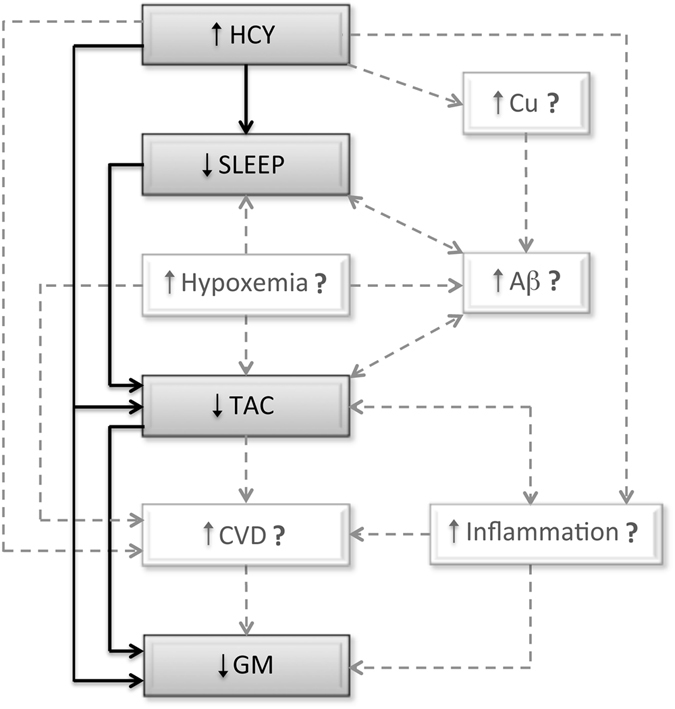Figure 4.

Hypothetical model linking our results with other potentially intervening factors. Gray boxes and black solid arrows are based on findings obtained in the current study; while white boxes and gray dashed arrows refer to other potentially intervening elements derived from alternative evidence. Our findings suggest that the relationship between HCY and TAC levels was mediated by poorer sleep quality in MCI, while the impact of HCY on cerebral GM was mediated by the relationship between sleep quality and TAC levels. Based on previous evidence, we hypothesize that the impact of HCY on TAC levels may be further mediated by copper (Cu) accumulation and/or Aβ aggregation in the brain, and that sleep disruptions may be additionally prompted by increased hypoxemia, which in turn has also shown to enhance Aβ burden; whereas the impact of HCY on GM loss may be further mediated by cardiovascular dysfunctions (CVD), which is promoted by multiple factors including elevated HCY, oxidative stress, reduced TAC and low-grade systemic inflammation.
